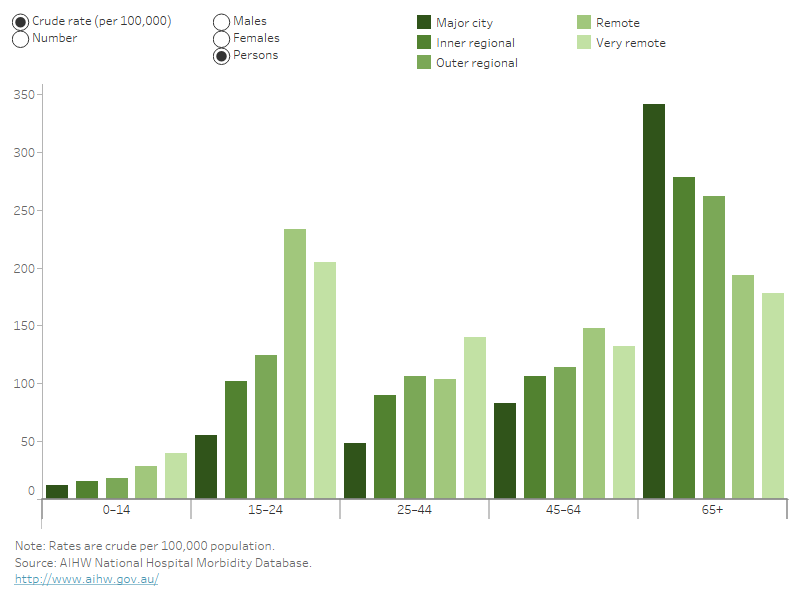Remoteness
Rates of injury vary across Australia according to where you live. In 2020-21, rates of hospitalised spinal injury increased along with remoteness of usual residence.
People living in Very remote areas, compared with people living in Major cities, were 2.3 times as likely to be hospitalised for a spinal injury.
| Males | Females | People |
|---|---|---|---|
Major cities | 94.6 | 74.5 | 84.9 |
Inner regional | 123.7 | 83.3 | 103.5 |
Outer regional | 140 | 86.4 | 113.4 |
Remote | 160.4 | 99.7 | 130.5 |
Very remote | 146.3 | 116.6 | 132.6 |
Note: Rates are age-standardised per 100,000 population.
Source: AIHW National Hospital Morbidity Database.
Numbers and rates of spinal injury hospitalisations generally increase with remoteness for males and females. Rates are highest in remote or very remote areas across all age groups except for the 65 and over age group where the reverse trend was seen and where highest rates were in major cities. For people aged 25-44, Very remote areas had the highest rates of spinal injury hospitalisations (Figure 1).
Figure 1: Numbers and rates of spinal injury hospitalisations increase with remoteness; age group and sex, 2020–21
Numbers and rates of spinal injury hospitalisations generally increase with remoteness for males and females. Rates are highest in remote or very remote areas across all age groups except for the 65 and over age group where the reverse trend was seen and where highest rates were in major cities. For people aged 25-44, Very remote areas had the highest rates of spinal injury hospitalisations.



